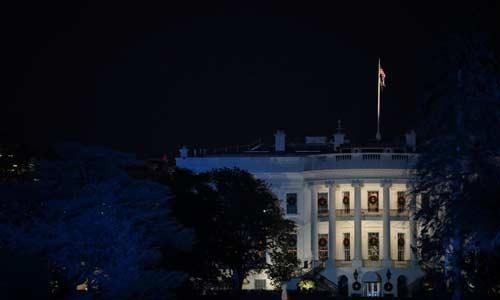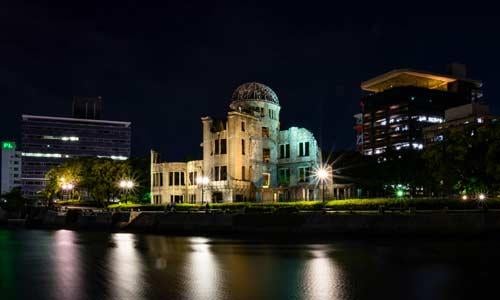I.
The nuclear arms race, a grim feature of modern life, has been with us since the devastation of Hiroshima and Nagasaki. Driven by a futile search for security through nuclear "superiority," this vastly expensive competition is increasingly a mortal threat to all humanity. Control of the arms race is one of mankind's most urgent needs. The inventories of nuclear warheads are coupled with accurate, long range and relatively invulnerable delivery systems? Together their destructive capacity is immense. If used in war they would kill hundreds of millions of persons, carry radioactive injury and death to many of the world's nations, profoundly damage the environment of the Earth we live and depend on, and unhinge and devastate the target nations so effectively that they would no longer function as modern industrial states. Indeed, the superpowers' inventories are so great that even small fractions of them could produce damage far beyond any past experience.
Neither superpower could now launch a counterforce surprise nuclear attack to disarm the other. Enough of each side's forces will survive or are invulnerable that the return blow would still produce prodigious damage, so shattering that no first strike is remotely rewarding. Thus, a relatively stable but uneasy balance has resulted in the recent past, the state of Mutually Assured Destruction. This balance of terror, while morally repugnant to many, is a fact of modern life. The superpowers have recognized that the populations of the United States and the Soviet Union have become unavoidably hostage because of the ineffectiveness of defenses against nuclear-armed strategic weapons systems—and so their 1972 agreement, and treaty, in effect terminated efforts at active anti-missile defenses.
The security of the United States and the Soviet Union, and of the other nations across the globe, is only as high as the expectation that the nuclear arsenals will never be used.
Strategic nuclear arsenals could be drastically reduced while still retaining ample deterrent forces in a world devoid of real peace. However, the superpowers—while professing commitment to the principle of nuclear parity—continue to reach for nuclear superiority or at least for unilateral advantage through the development and deployment of new weapons and weapons systems. By and large the U.S. has been ahead in the superpowers' arms technology race: the first in nuclear and thermonuclear weapons, nuclear submarines, solid fuel missiles, and many other developments. The U.S. continues to forge ahead: developing MX—an advanced, perhaps mobile, land-based intercontinental missile and multiple independently-targetable reentry vehicles (MIRV) of extreme accuracy, the neutron bomb, the air- and sea-launched strategic range cruise missiles.
Many of these innovations have been stimulated by uncertainty about what the Soviet Union was deploying. Soviet responses are clouded in secrecy and are possibly highly threatening They have forced the U.S. to proceed. In general, the Soviet Union has responded to U.S. technological innovations but with a lag--averaging over 4 years—in reaching U.S. levels. Their deployments then continue, exceeding the United States' and so raising fears of their gaining "superiority." The Soviet Union is developing and deploying MIRV'ed missiles of ever greater range, accuracy, and explosive power, perhaps greatly intensifying the civil defense of its population, and continuing other developments. The Soviet Union now has more strategic missiles and a greater nuclear throw-weight, while the United States exceeds in the accuracy of delivery systems as well as in numbers of nuclear warheads. The Soviets continue also to increase their conventional forces, raising fears of aggression aimed at Western Europe. This has stimulated responses in conventional arms, and, especially grave, in dependence on nuclear weapons among the NATO nations. The United States and the Soviet Union both are engaged in vigorous underground nuclear warhead test programs. The responsibility for the race is unmistakably shared.
The arms race is in full swing! The roughly twelve thousand strategic warheads of today are likely to become thirty thousand long before the end of the century and the tens of thousands of tactical weapons augmented also. These increases and the improvements in missile accuracy, retargeting capability and invulnerability lead to greater "flexibility"—and so to the greater likelihood of starting nuclear weapons' use. What results is the undermining of the balance of terror. New weapons now in sight will further decrease the stability of this delicate balance and will make the monitoring of future arms agreements more difficult, if not impossible, without gaining decisive military superiority for either side.
The superpowers' belief that security rests with potent nuclear armaments is more and more shared by other nations. The strategic arms race stimulates the proliferation of nuclear weapons among nations some of which may be weak or irresponsible, and thus more likely to resort to the use of nuclear weapons in a local war. Such wars could easily widen, thus adding to the likelihood of a final immense nuclear holocaust between the superpowers.
More than ever it is urgent now to slow down and ultimately to stop the nuclear arms race, thus improving the stability of the nuclear stand off and setting the stage for reduction of the great inventories of weapons.
II. Controlling the Arms Race
Several attempts have been made to bring the nuclear arms race under control but none has been successful in the face of the pressures that drive the competition. The 1960 treaty to demilitarize the Antarctic continent, the partial nuclear test ban of 1963 and the later treaties not to deploy nuclear warheads on the ocean bottoms and in outer space are but peripheral to the nuclear arms race. The Non-Proliferation Treaty of 1968 has not gained universal adherence and the superpowers have not carried out their implicit commitments in the treaty to seek nuclear disarmament. The U.S. and Soviet Union have negotiated bilaterally in the Strategic Arms Limitations Talks, or SALT, with some yield: they have agreed not to interfere with their non-intrusive means of verification of missile launch inventories, to minimize the installation of anti-ballistic missile systems, and they have placed ceilings, albeit very high ceilings, on the numbers of deployed strategic missiles. The talks have provided a forum for continuing negotiations, but they have not stopped the qualitative arms race, and they have not reduced the huge inventories of strategic delivery weapon systems. While negotiations advance slowly, hindered by mistrust and endless maneuver for advantage, virtually unlimited competition for "strategic advantage"—through new and more deadly delivery systems—continues unhindered.
We believe that the key to a safer future lies in the control of strategic weapons technology. To protect the world from the disaster of a nuclear war the superpowers must halt the development of new weapons which frustrate attempts to curb the arms race. Because there is essential equality in U.S. and Soviet Union forces the superpowers can still take effective steps to stop the nuclear arms race. This must be done both through mutually agreed on, and through unilateral initiative actions.
III. Recommendations
We hereby recommend that:
- The United States announce that it will halt underground testing of nuclear explosives provided that the Soviet Union follows suit within a reasonable time.
- The United States announce that it will not field test or deploy new strategic nuclear weapons, nuclear weapons systems, or missile defense systems for a period of 2 to 3 years provided the Soviet Union demonstrably does likewise.
These measures, carried out with due care, do not jeopardize our security. The recommendations do not stem from blind faith in the good intentions of the Soviet Union. We already can detect Soviet tests of nuclear weapons smaller than the Hiroshima bomb with existing seismic sensors and clearly distinguish them from earthquakes. Hence underground tests of strategic warheads cannot escape detection. our satellites already inspect Soviet missile launches, missile site construction, and submarine arrivals and departures; thus we would know if the Soviet Union were not following our lead. Should the recommended initiatives not bear fruit, the interruption in testing would hardly degrade our security. It takes many years to develop and deploy strategic weapons systems and our strength is such that a short delay of the sort we recommend cannot put the U.S. at risk.
These measures, carried out with due care, can restrain the technological arms race. Without underground tests there is not enough confidence in the new warhead designs to allow deployment. New missiles also depend on more accurate guidance systems, and these can only be tried and perfected in repeated test firings. By reducing the number of missile test firings to those needed for maintenance, a major hurdle to new deployments would be created.
This is the moment for such moves. We are, once again, at a turning point in the nuclear arms race. Because SALT I succeeded in placing ceilings on the number of missile launchers, it stimulated an intense race towards more accurate and powerful missiles, and more warheads per launcher, the development of new and more potent bombers and submarines to replace existing fleets. Most important, President Carter has displayed a more penetrating understanding of the dangers of the arms race than the previous leaders of the U.S. and U.S.S.R., and has indicated a readiness to consider imaginative policies. Our recommendations do not only meet a current need—they come at a propitious moment.
The United States should take the initiative. The U.S. lead in new weapons technology in the nuclear era is a reflection of our overall superiority in creating new technologies and sophisticated industries. Under these circumstances, we cannot expect the U.S.S.R. to take the initiative.
Our proposals would be an important step toward the controls of strategic weapons technology which are so essential to our short-term security. They would thereby create that base of confidence and stability which is a prerequisite to overall reductions of the nuclear arsenals.
We urge the government of the United States to demonstrate its dedication to arms control by initiating the unilateral, reciprocal steps we have recommended, that represent the first steps leading to gradual disarmament. These actions, if carried out by the United States, would represent a policy of restraint of the greatest political significance and yet, for an interim period, be devoid of military risk. Should the Soviet Union reciprocate—and they, like the United States, have much to gain in so doing—a great step forward would be taken to diminish the threat of nuclear war.



